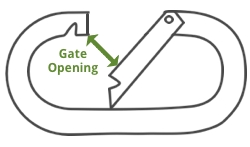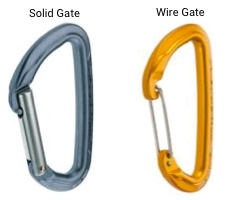Collecting every piece of gear takes a little time.
We think it's worth the wait.
Nice choice!
Give us a moment to collect those options for you.


Search by model name only, and spelling counts. Protip: Type slowly and wait for the auto-complete.
If you’ve already used other filters, this search bar will not override them.
Retired gear and unfilterable gear (missing key specs like price/weight) will not appear with this search.


We’re adding more retailers all the time. Send us a note if there’s a retailer you’d like to see.
We feel a little weird calling out Amazon separately as we're not huge fans of this mega-corp. We do this because we're partners with Amazon in multiple countries, so if somebody from the US, Canada, or UK clicks an Amazon link, it'll go to their country-specific Amazon page (when possible). At the moment, this is the only way to find non-US buying options on the site.


In grams, the weight, as stated by the manufacturer/brand.


The full retail price in US dollars.
With non-US products, we have statically converted the price to US dollars.
This static conversion also means it's possible that there will be some misleading figures at times. The original price and currency will be noted on the individual product pages.


The percentage off the full retail price that we've seen from a retailer.
Note: this retailer may not be in your country (this filter doesn't yet match with the buying options filter).


Gate opening refers to the distance between a carabiner’s nose and the fully open gate.

top of your quickdraw: 17 mm – 22 mm
bottom of your quickdraw: 23 mm – 26 mm
as an anchor holding webbing/gear: 19 mm+
Adding bias towards a larger gate opening is a great option once you’ve narrowed your choice to a few similar carabiners and need help determining which one is the best.



Almost every carabiner you use will be non-locking offset D’s, with the exception of a Pear/HMS locker as your belay carabiner.
60% of the market

A modification of the standard D shape, the top of an offset D is much wider, allowing for a larger (and superior) gate opening. When loaded, most of the weight is transferred to the spine of the carabiner making them stronger than most other shapes. Used for top and bottom quickdraws, as racking carabiners, and lightweight lockers.
22% of the market

The Pear/HMS carabiner is used primarily for belaying and/or setting a powerpoint in an anchor. The wide top means they can hold a lot of gear. They are almost always locking and are generally heavier (than D/offset D's) because they need more material to gain back strength lost due to their shape.
8% of the market

The first carabiner shape to be mass produced. When loaded, the pressure is shared equally on both sides of the ‘biner. Since the weaker gate shares the load with the spine, oval biners aren’t as strong as shapes that direct the load to the spine. The bonus is, your gear rests squarely in the middle, so it's great for holding nuts, pulleys, and prusiks.
7% of the market

D’s have a symmetrical shape that sets the rope closer to the spine, putting the load on the spine (versus sharing the load with the weaker gate side, like the oval). Since the strongest part of the carabiner carries the weight, D’s are the strongest shape. Downside: Smaller gate openings than the offset D.
1% of the market

Although most climbers wouldn’t refer to this shape as a “carabiner” they are certified by the same EN standard as all the other carabiners. These semi-permanent links ensure the gate will not accidentally open. They're used when setting up a semi-permanent rappel station (not used while climbing up).
less than 1% of the market

Semi-circle: Mostly used by Search and Rescue as this is a great way to secure a chest harness.
3-D: Designed to increase the gate opening and to reduce the chance that the rock will rub your rope and/or the locking gate open. Buy if you’re the curious type; they’re not cheap, and there’s not many in the US.



Screw gates are generally lighter and cheaper.
Auto-locking gates are usually considered safer as they automatically snap shut, not counting on one's memory to close and are harder to accidentally unlock. The debate comes on opening speed as some are much faster while others can be a struggle.




Generally on beefier carabiners, so they're usually heavier and more durable. They can also feel more substantial in your hands while clipping. Often favored by sport climbers.
Featured on the lightest carabiners, so they're favored by trad and alpine climbers.
If you want keylock nose carabiners, then solid gates will be much cheaper compared to wire gates.
When wiregates first came out they were not trusted (too new, looked too simple). Now, it's proven that wiregates have less gate flutter and gate shutter than solid gates.



It's easier to see the difference between straight and bent gates on solid gate carabiners:

The standard. Always used as the bolt-end of the quickdraw, and still sometimes used on the rope-side too. Also used for racking gear such as cam and nuts.
Created to make it easier to put the rope into a quickdraw with their larger gate opening. Primarily used on the rope-end (bottom) of quickdraws.
Many manufacturers are now making the bolt-end carabiner come standard in silver (to match the bolt color), and are coloring the rope-end with other anodizations.
Do not mix (interchange) bolt-end carabiners and rope-end carabiners. This can be very dangerous as small abrasions made by the bolt can easily wear your rope. DMM put out a great video/write-up on this issue.


Because sometimes matching is nice.
Note: If you choose a color and the picture does not seem to match, this means it's also available in another color and we just don't have capabilities to show you that color on this page. If you click into the product you'll be able to see more product photos (hopefully!) of the color you're looking for.


If you'd like to narrow down your search by what others consider to be, "The Best Gear" this is your filter. We’re including all the media awards from the magazines like Climbing, Rock and Ice, and Alpinist, along with online resources like Gear Junkie, Outdoor Gear Labs, and more.
We scour the internet for new awards quarterly. If you know of some reputable awards that we’re missing, send us a note so we can check them out.


The list of manufacturers and brands that we have all the technical specs for.
If a brand is missing from this list, scroll to the bottom of this page to see all the unfilterable gear we track, and ideally it'll be there.
If you don't see the brand you're looking for in the unfilterable products area, definitely send us a note so we can look into it further.
We do our very best to find and display every technical spec for every piece of climbing gear in the world. But sometimes we just can’t dig up a spec or two (usually it's the official price and weight). Sadly, this means not every product is available for filtering and sorting :(
If we allowed products that are missing key specs to display in the results above, these incomplete products would need to appear no matter what filters you chose. This would make the filtered results cluttered and misleading. So instead of leaving out these incomplete products entirely, we're listing them below: